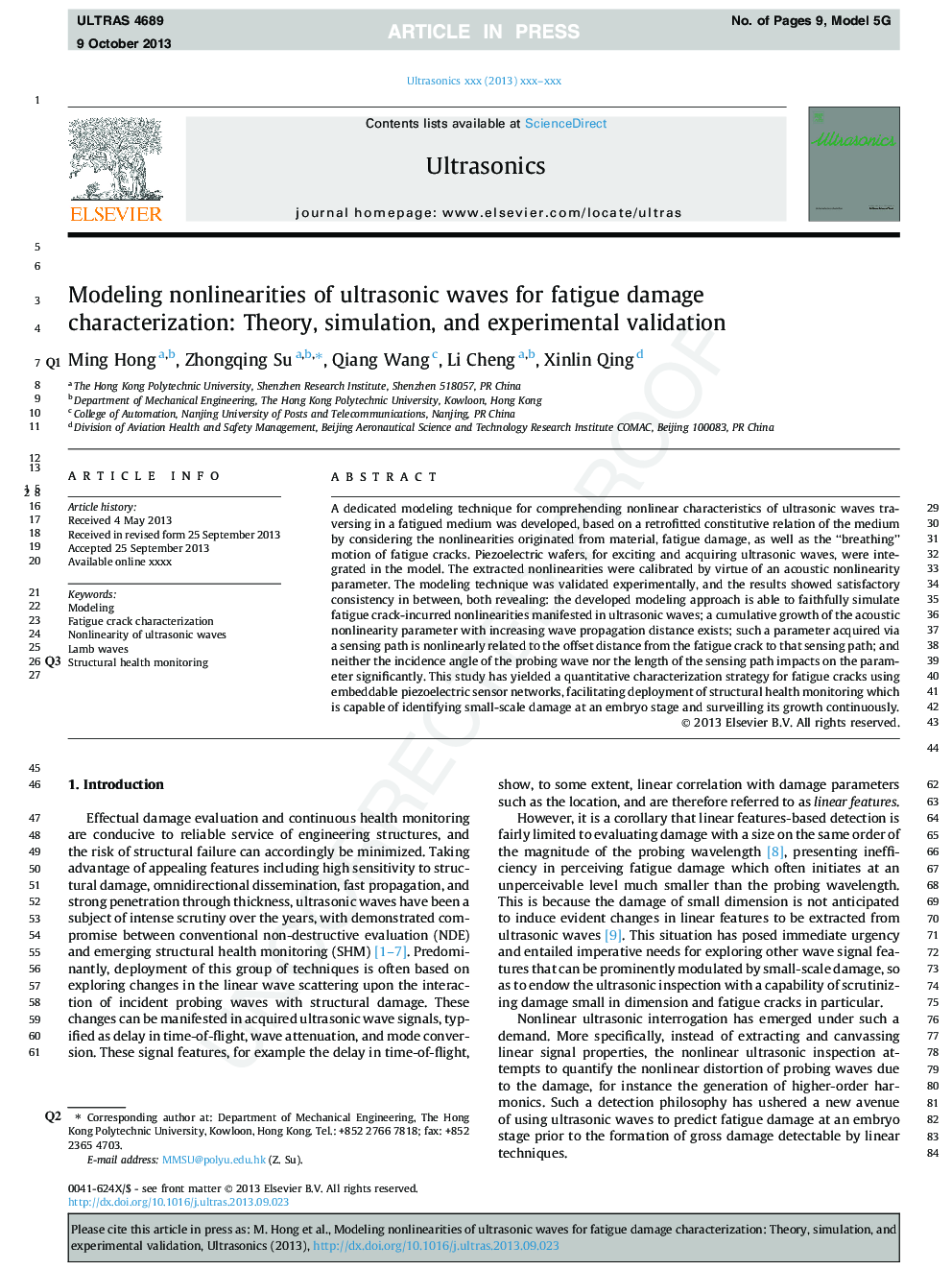| Article ID | Journal | Published Year | Pages | File Type |
|---|---|---|---|---|
| 10690406 | Ultrasonics | 2014 | 9 Pages |
Abstract
A dedicated modeling technique for comprehending nonlinear characteristics of ultrasonic waves traversing in a fatigued medium was developed, based on a retrofitted constitutive relation of the medium by considering the nonlinearities originated from material, fatigue damage, as well as the “breathing” motion of fatigue cracks. Piezoelectric wafers, for exciting and acquiring ultrasonic waves, were integrated in the model. The extracted nonlinearities were calibrated by virtue of an acoustic nonlinearity parameter. The modeling technique was validated experimentally, and the results showed satisfactory consistency in between, both revealing: the developed modeling approach is able to faithfully simulate fatigue crack-incurred nonlinearities manifested in ultrasonic waves; a cumulative growth of the acoustic nonlinearity parameter with increasing wave propagation distance exists; such a parameter acquired via a sensing path is nonlinearly related to the offset distance from the fatigue crack to that sensing path; and neither the incidence angle of the probing wave nor the length of the sensing path impacts on the parameter significantly. This study has yielded a quantitative characterization strategy for fatigue cracks using embeddable piezoelectric sensor networks, facilitating deployment of structural health monitoring which is capable of identifying small-scale damage at an embryo stage and surveilling its growth continuously.
Related Topics
Physical Sciences and Engineering
Physics and Astronomy
Acoustics and Ultrasonics
Authors
Ming Hong, Zhongqing Su, Qiang Wang, Li Cheng, Xinlin Qing,
